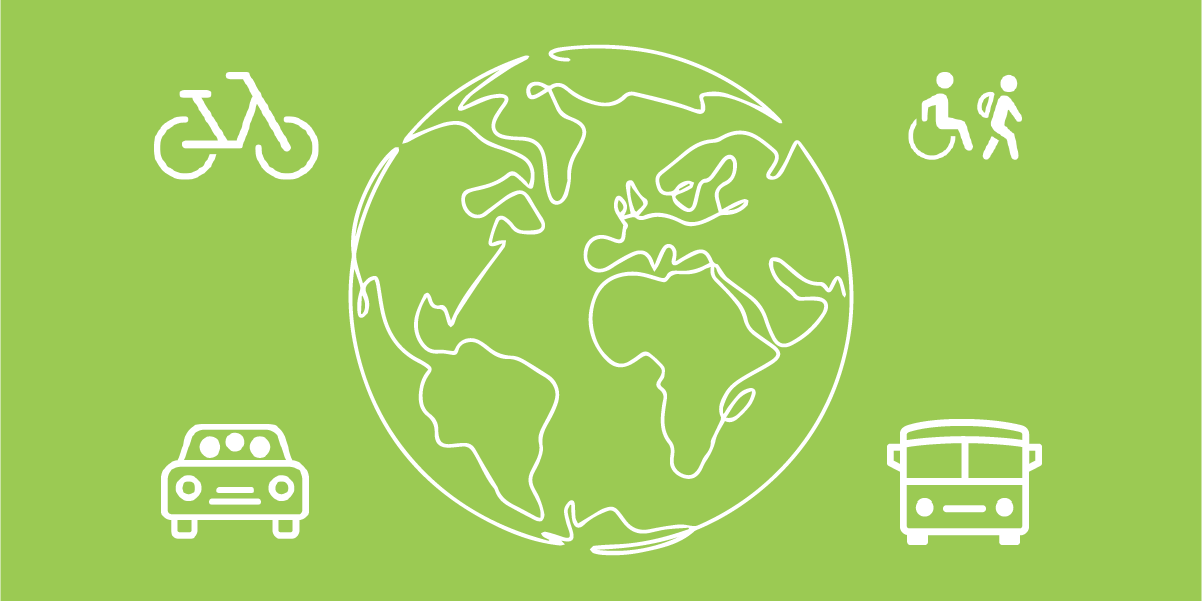Earth Day - A Look at Commute Options
Posted on April 19, 2022
Transportation is the largest source of carbon emissions in the United States. (Source: United States Environmental Protection Agency - USEPA). The gasoline-powered automobile is the single greatest polluter worldwide, because emissions from millions of vehicles on the road add up. To reduce greenhouse gas emissions, individuals can use cleaner modes of transportation to get around, from public transit to biking and walking and car or vanpools.
DRIVING: Transportation relies heavily on petroleum, and passenger cars and light-duty trucks (i.e. sport vehicles, pickup trucks and minivans) contribute half of the carbon dioxide emissions from the U.S. transportation sector. Burning one gallon of gasoline creates about 20 pounds of CO2—which means the average vehicle creates roughly six to nine tons of CO2 each year. (Source: United States Department of Transportation – USDOT). Even zero emission vehicles (ZEV’s) can leave an environmental footprint via electricity over usage and add to local traffic congestion & parking crunches.
ECO-DRIVING: Pre-planning/bundling your trips can play a huge role in lessening emissions and save money in a gasoline-powered car. Try bundling-up your errands into one trip!
CAR SHARING & CARPOOLING: Need to get around town but don’t really need a car all the time? Car sharing programs provide access to a car when you need one. Membership fees cover gas, maintenance and insurance. Many companies – such as Flexcar and ZipCar – offer low emission or hybrid cars too! Car sharing can help reduce the number of cars manufactured and driven, which saves natural resources and energy – and can also reduce land needed for parking as well as traffic congestion. Carpooling is another friendly way to save money, time, frustration, and gasoline. If daily commuters carpooled 20 days a month, it would reduce driving costs by 40-50 percent. (Source: United States Department of Transportation – USDOT).
TRANSIT: Individuals can save more than $10,000 per year by taking public transportation instead of driving. Moreover, this mode can lead to substantial environmental benefits. If your commute is 20-miles round trip, the switch to public transportation could lower your carbon footprint by 4,800 pounds annually. Communities with strong public transportation can reduce the nation’s carbon emissions by 37 million metric tons yearly. (Source: United States Environmental Protection Agency - USEPA).
CYCLING & WALKING: Bicycling and walking are not just recreational activities; these options help to reduce greenhouse gas emissions, traffic congestion and our demand for oil. Additional benefits include reducing other environmental impacts of motorized transportation, such as noise and the destruction of open space, wetlands, and other habitats. For local guidance on bicycle and pedestrian trails check out our Bellevue bike map. Your local bike shop is also an excellent resource for information on bicycle commuting and the latest bike gadgets and safety tools.
TELECOMMUTING: The best commute is no commute! Check with your employer about their remote/virtual work policy. If it currently doesn’t offer an option to telework, speak with the human resources staff at your workplace to consider implementing one. Even working one day a week remotely helps the environment & saves you money among other myriad ecological & personal benefits!
-Choose Your Way staffer Alison

